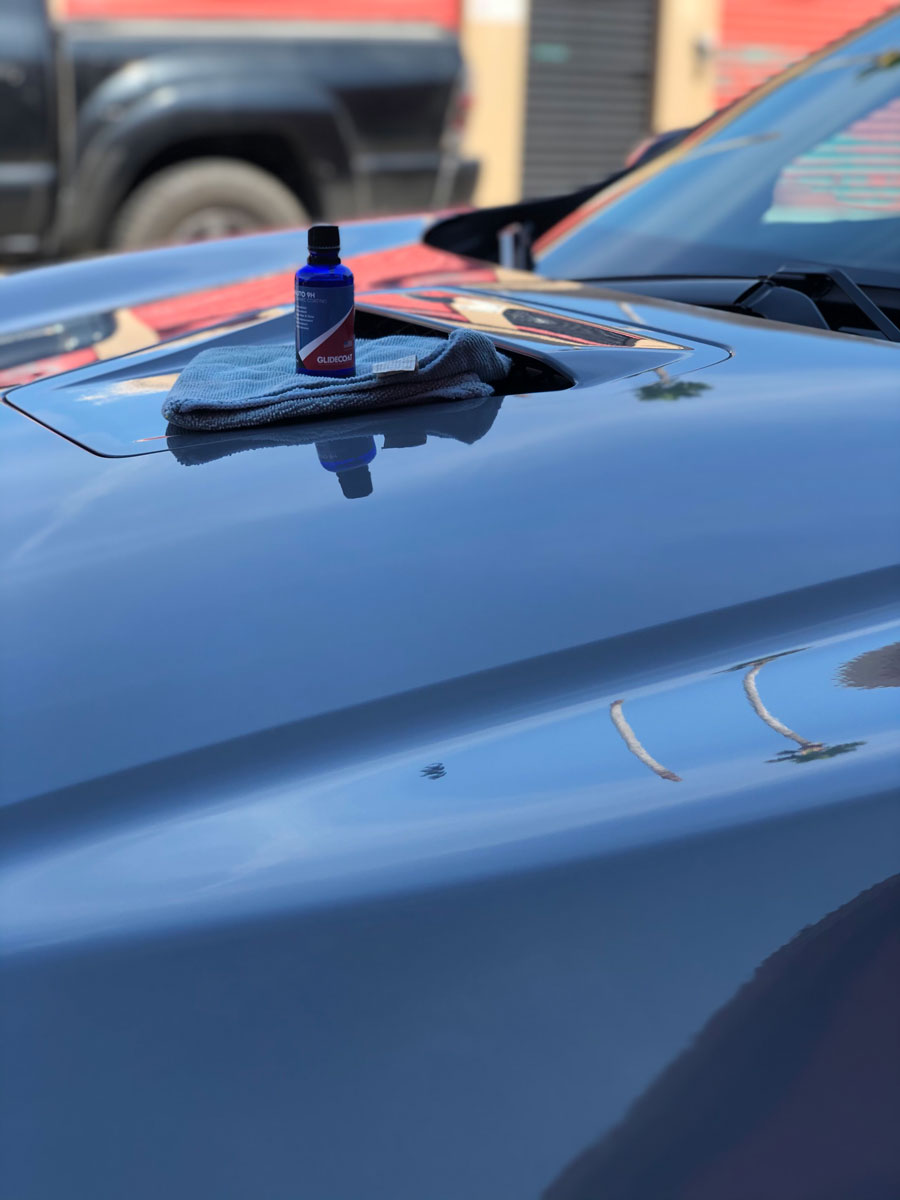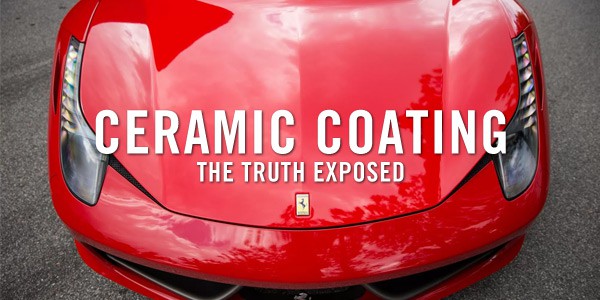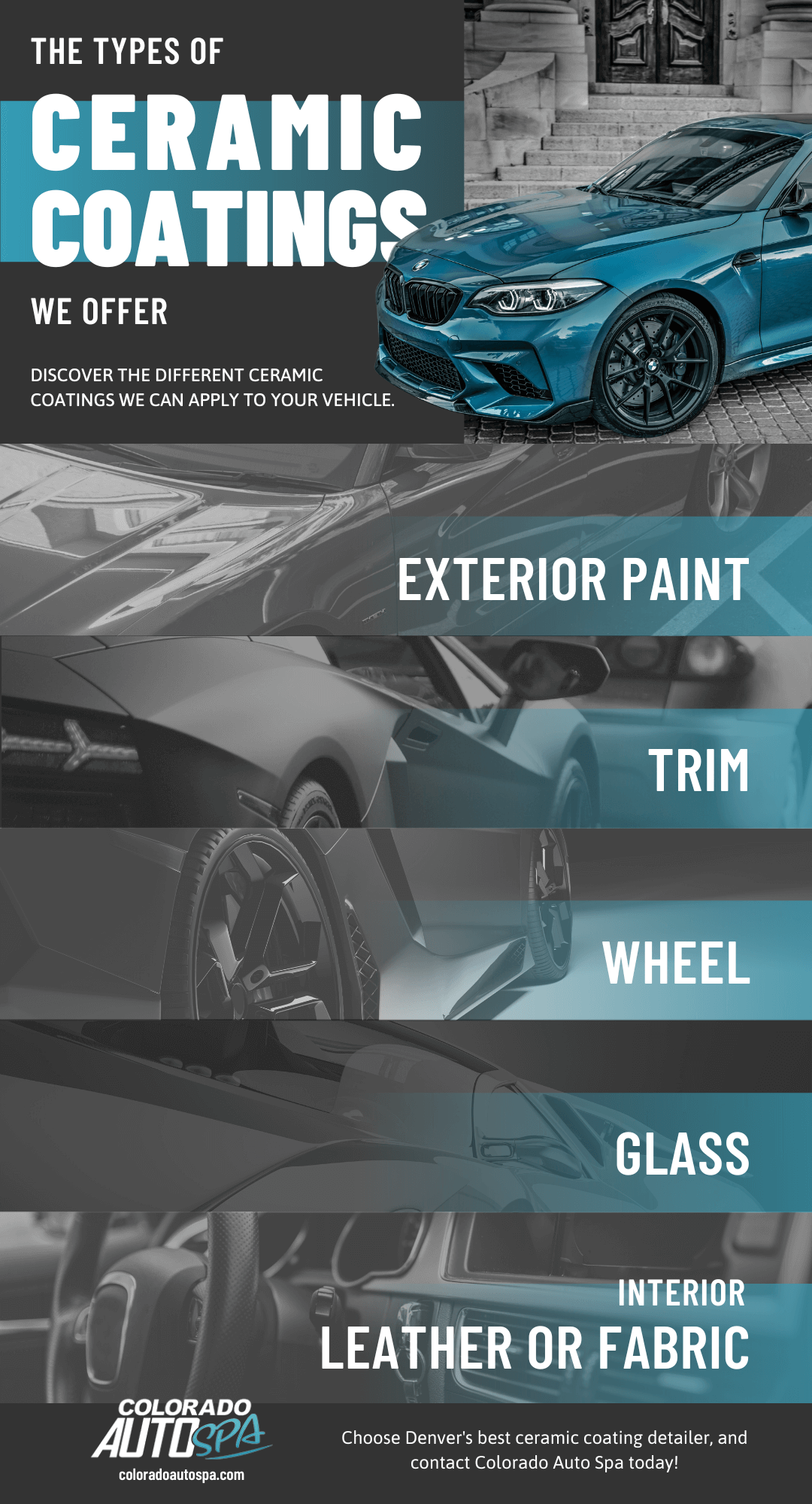Ceramic Coating vs. Traditional Wax: Which is Right for Your Vehicle?
Ceramic Coating vs. Traditional Wax: Which is Right for Your Vehicle?
Blog Article
The Role of Ceramic Layer in Securing Your Vehicle's Paint From Environmental Damage
Ceramic covering has actually arised as an innovative service for car proprietors looking for to preserve the stability of their automobile's outside. As we discover the nuances of ceramic finishing, it comes to be apparent that the choice to execute this safety measure could substantially influence your automobile's long life and visual.
What Is Ceramic Coating?
Ceramic finish is an advanced fluid polymer related to the outside surface areas of a vehicle, designed to give a long lasting layer of defense for the paint. This cutting-edge solution creates a chemical bond with the automobile's manufacturing facility paint, producing a resistant and hydrophobic shield. The coating consists of nanoparticles that complete the microscopic imperfections in the paint, resulting in a smooth surface that improves gloss and radiate.
Normally, ceramic coatings are readily available in various formulations, permitting various degrees of protection and longevity. While some items can last for several months, others use protection for numerous years, depending on the density of the application and environmental factors. The application process needs careful preparation, consisting of washing, sanitizing, and polishing the lorry's surface to make sure optimum attachment of the layer.

Advantages of Ceramic Finishing
Among the key benefits of using a ceramic finish is the phenomenal security it uses to automotive paint. This innovative finish develops a resilient layer that shields the vehicle's surface area from a range of environmental dangers, including UV rays, acid rainfall, bird droppings, and tree sap. By supplying this robust defense, ceramic coverings substantially reduce the danger of fading and etching, preserving the auto's aesthetic appeal with time.
Along with defense, ceramic finishings are renowned for their hydrophobic residential or commercial properties, which drive away water and dirt, making it much easier to preserve a clean lorry. This self-cleaning effect minimizes the regularity of cleaning, saving both time and resources. Ceramic coverings improve the deepness of the paint's gloss, resulting in a sleek and dynamic appearance that elevates the overall look of the car.
One more remarkable advantage is the longevity of ceramic coverings. Unlike conventional waxes or sealants that need regular reapplication, ceramic finishes can last several years, providing a cost-efficient remedy for car owners looking for lasting protection. Overall, purchasing ceramic covering leads to enhanced resilience, decreased maintenance, and continual aesthetic charm for vehicle paint.
Exactly How Ceramic Finishing Works
A ceramic covering operates via a chemical bonding procedure that creates a protective layer on the lorry's paint surface area. This cutting-edge remedy makes use of advanced nanotechnology, where microscopic fragments of silica are put on hold in a liquid form - ceramic coating. Upon application, these fragments bond with the manufacturing facility paint, forming a durable and hydrophobic layer that boosts the car's surface
The main element of ceramic coverings, silicon dioxide (SiO2), adds to the finish's stamina and resilience. When healed, the finishing transforms right into a difficult, glass-like coating that guards the paint from environmental impurities such as dirt, UV rays, bird droppings, and tree sap. This molecular bond causes a surface that is not just immune to scratches however also easier to cleanse, as dust and gunk are less most likely to adhere.
In addition, the hydrophobic residential properties of ceramic coverings create water to bead and slide off, lowering the possibilities of water places and natural resource. This protective barrier effectively lengthens the life of the paint and preserves the car's visual allure, Look At This offering auto owners a durable service for paint defense.
Application Process of Ceramic Finishing
When considering the application of ceramic finish, prep work is key to achieving ideal results. The very first step entails extensively washing the car to remove dirt, crud, and contaminants from the surface area. This usually includes a decontamination procedure utilizing clay bars or chemical cleansers to ensure the paint is completely tidy. Any type of blemishes or scratches ought to be dealt with at this stage, as the finish will bond with the surface beneath.

Ceramic coating is after that applied in tiny sections, commonly utilizing an applicator pad. The vehicle must be left to treat in a controlled atmosphere to enable the coating to totally bond with the paint.
Long-Term Maintenance and Treatment
Accomplishing an effective ceramic finishing application establishes the foundation for lasting protection, however correct upkeep is vital to protecting its benefits. Regular cleaning is necessary; utilizing a pH-neutral car shampoo will certainly help preserve the coating's stability without creating damage. Prevent automated auto washes that use abrasive products, as they can jeopardize the layer's surface.

In addition, applying a ceramic covering maintenance spray can improve the existing layer, offering an additional increase in security and sparkle. It's a good idea to perform this every 3 to six months, relying on environmental direct exposure.
Finally, auto parking in shaded locations or making use of auto covers can protect against long term direct exposure to unsafe UV rays and environmental pollutants, further prolonging the life of your ceramic finish. By sticking to these upkeep methods, you can guarantee your vehicle's surface remains safeguarded and aesthetically appealing for several years to find.
Final Thought
In summary, ceramic covering works as a vital protective action for automotive paint, efficiently shielding automobiles from a series of environmental risks. Its ability to develop a durable hydrophobic barrier not just boosts aesthetic appeal yet likewise substantially reduces the frequency and intensity of maintenance called for. The long-lasting nature of this sophisticated polymer highlights its worth in preserving automobile stability and appearance, eventually contributing to an extra aesthetically enticing and long lasting automobile finish.
Ceramic coating is an advanced fluid polymer used to the exterior surfaces of a lorry, designed to provide a sturdy layer of security for the paint. Ceramic coverings boost the depth of the paint's gloss, websites resulting in a polished and lively look that raises the overall look of the lorry.
A ceramic finish operates with a chemical bonding procedure that produces a safety layer on the vehicle's paint surface area.The major element of ceramic coatings, silicon dioxide (SiO2), contributes to the layer's stamina and strength.In summary, ceramic finishing offers as an important safety action for automobile paint, properly visit this web-site shielding automobiles from an array of environmental risks.
Report this page